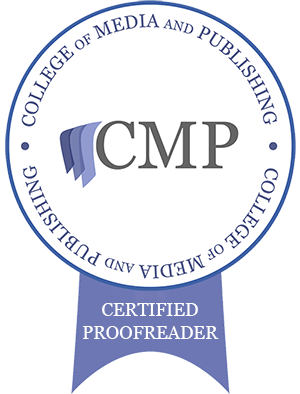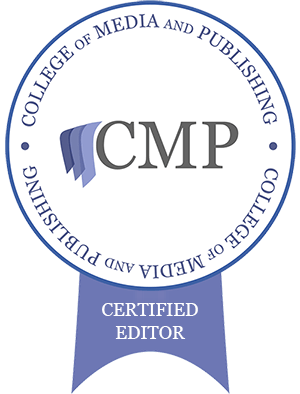
The Comma is Important
Commas are important punctuation marks. If nothing else, they let you breathe! Commas are a short pause in a sentence, compared to a full stop or period. The comma is essential in writing but often misused. So let’s look at some of the rules about comma usage.
Lists and the ‘Oxford Comma’
Writing a list of more than three items in a sentence? Commas are used to separate the items. The final two items have ‘and’ or ‘or’ between them. A lot of publications will not use a comma after the ‘and’ or ‘or’. This is the “Oxford Comma”.
The Oxford comma,or serial comma, gives clarity. It is sometimes controversial, but there are definitely cases where not using it will cause confusion for the reader. See the example below:
“The milkshake flavours are banana, strawberry, chocolate, cookies and cream and vanilla.”
“The milkshake flavours are banana, strawberry, chocolate, cookies and cream, and vanilla.”
See the difference? It’s subtle, and most people would figure out that it is “cookies and cream” and not two separate flavours called “cookies” and “cream”. It is confusing, especially if your writing is being read by someone whose first language isn’t English.
Commas are used to separate two adjectives in a sentence, but only if the order of the adjectives can be switched and still make sense. The trick is if you put “and” in between the adjectives and it still makes sense, then use a comma.
The Dreaded Comma Splice
The comma splice occurs when two independent clauses are joined by a comma, when they really should be separate sentences using a full stop. This can lead to a run-on sentence. Here’s an example.
“She opened the fridge, her phone started to ring.”
The two clauses are not related to each other. So, you can rewrite it as two separate sentences.
“She opened the fridge. Her phone started to ring.”
Or you can use a connecting word to join the clauses together and use a comma at the end of the first clause.
“She opened the fridge, but her phone started to ring.”
As a rule, if the subject isn’t used in front of a second verb, you don’t need a comma. You might need it for clarity if there is ambiguity about who is performing the second verb. You may need a comma before the word “because” for the same kind of reason.
An introductory phrase or dependent clause needs a comma after it. Such as this example:
“If you don’t know, I can’t help you.”
Asides and Extra Information
Adding an aside to a sentence with extra but not essential information, requires the use of commas. A comma comes before the aside, and one after it. This is an appositive comma.
“Elaine, my girlfriend, has been there twice.”
It is especially important if the subject is clearly identified already, because the additional description isn’t essential. Avoid ambiguity where you can. See these two examples:
“My girlfriend Elaine has been there.”
“My girlfriend, Elaine, has been there.”
The first example suggests the speaker has more than one girlfriend and is specifying which one he is talking about. The second example indicates that the speaker only has one girlfriend so her name is additional information. This rule is often misused and can lead to confusion.
Other Comma Uses
Commas are used around words that introduce a sentence or expressions that interrupt the flow of the sentence. Things like “Well,” or “No,” at the beginning of a sentence. Same thing if you have a phrase like “by the way” or “however”.
Writing dialogue is a big one for comma usage. I’ll cover that in more detail in the future as I’d like to do a series on writing dialogue properly. But introducing direct quotes requires a comma before the opening speech mark. For dialogue tags after the quotation, the comma comes at the end of the last word of the quote.
Commas need to be used to separate a statement from a contrasting statement in a sentence, or a statement combined with a question. You would also use it before and after something like ‘e.g.’ or ‘etc.’
Don’t Underestimate the Importance

Commas are an essential punctuation, important for preventing confusion in writing. A well-known example is this sentence: “Let’s eat grandma.” Oof, cannibalism is rather frowned upon these days. “Let’s eat, grandma.” Much better. If you want proof of how important a comma is to the meaning of a sentence, try this one on for size.
“A woman without her man is nothing.”
Where do you think you could put a comma and how would it affect this sentence?
“A woman, without her man, is nothing.”
“A woman, without her, man is nothing.”
The first version suggests that a woman is nothing unless she has a man. The second suggests that a man is nothing without a woman. So comma placement really does matter if you want your reader to get the right meaning for a sentence.
Thanks for reading, I hope this has been helpful. For more details and rules about commas, check the Blue Book of Grammar section here. It even has a quiz to check your knowledge. For more writing content, subscribe to my blog. I cover writing, proofreading and editing subjects, as well as analysing stories in various media. I also have a YouTube channel where I play video games and discuss the stories, lore and world-building. For more punctuation rules in dialogue, see this post.










